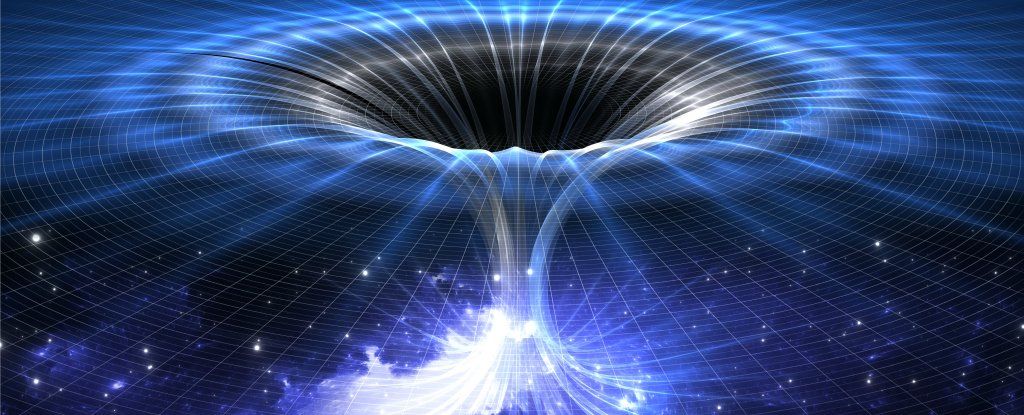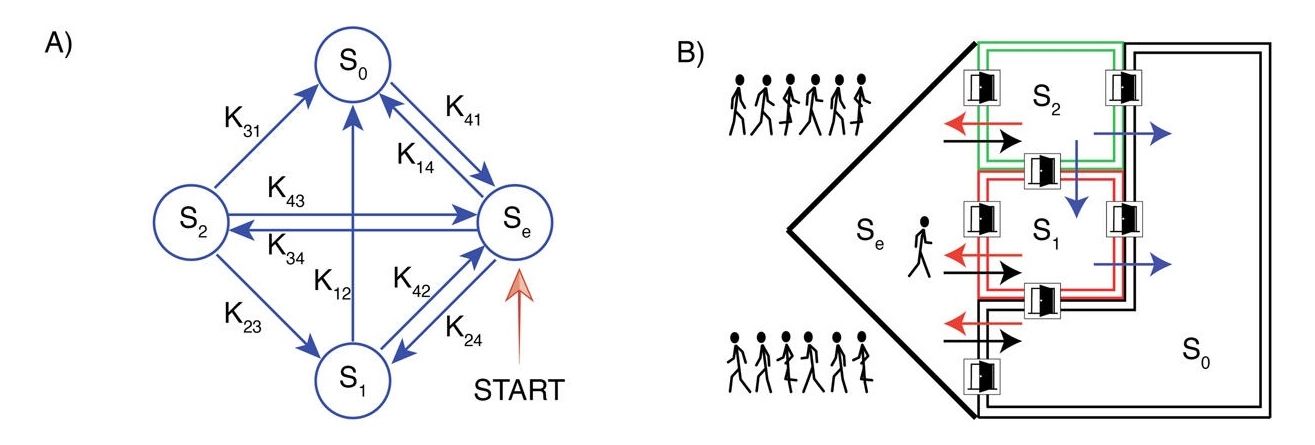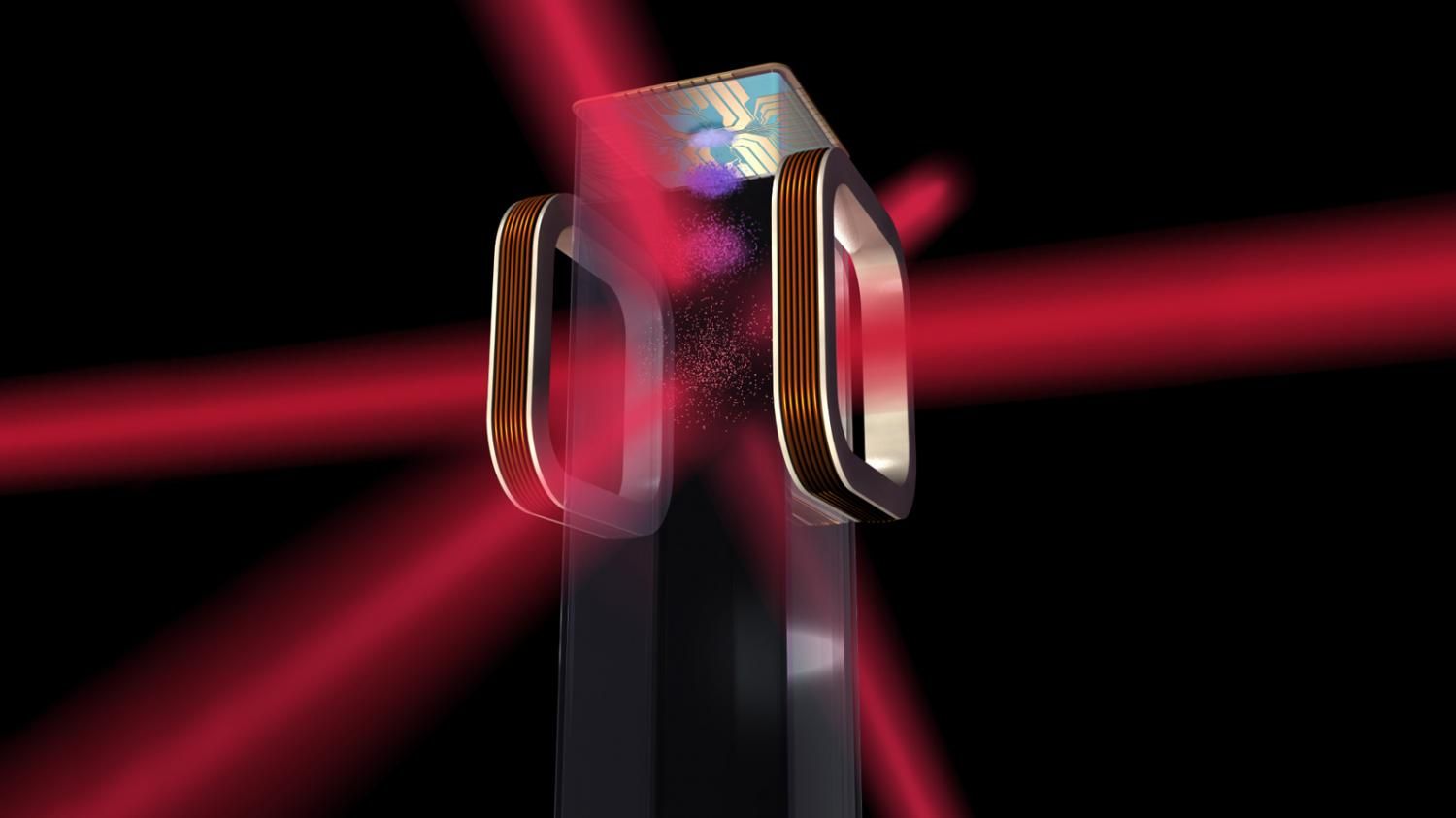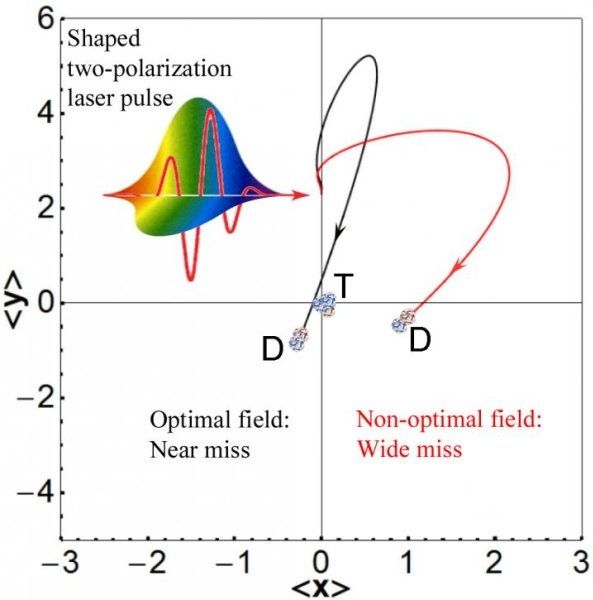Archive for the ‘particle physics’ category: Page 527
Mar 24, 2017
Theoretical Physicists Suggest There’s a Portal Linking the Standard Model to Dark Physics
Posted by Andreas Matt in categories: cosmology, particle physics, quantum physics, space travel
Theoretical physicists have put forward a new hypothesis that aims to connect the world of visible physics to the hidden forces of our Universe: what if there’s a portal that bridges the gap between the standard model to dark matter and dark energy?
The idea is that the reason we struggle to understand things such as dark matter and dark energy isn’t because they don’t exist — it’s because we’ve been oblivious to a portal through which regular particles and these ‘dark particles’ interact. And it’s something that could be tested experimentally.
The idea of portals in the Universe might sound pretty crazy, but let’s be clear for a second: we’re talking portals on the quantum, teeny-tiny scale here — nothing that you could drive a spacecraft through.
Mar 21, 2017
Law Controlling Bizarre Behavior of Black Holes –“Points to a Deeper Understanding of Realty”
Posted by Andreas Matt in categories: cosmology, particle physics
A team of scientists has discovered that a law controlling the bizarre behavior of black holes out in space—is also true for cold helium atoms that can be studied in laboratories. “It’s called an entanglement area law,” says Adrian Del Maestro, a physicist at the University of Vermont who co-led the research. That this law appears at both the vast scale of outer space and at the tiny scale of atoms, “is weird,” Del Maestro says, “and it points to a deeper understanding of reality.”
Mar 19, 2017
Nanoscale logic machines go beyond binary computing
Posted by Shailesh Prasad in categories: computing, information science, nanotechnology, particle physics
(Phys.org)—Scientists have built tiny logic machines out of single atoms that operate completely differently than conventional logic devices do. Instead of relying on the binary switching paradigm like that used by transistors in today’s computers, the new nanoscale logic machines physically simulate the problems and take advantage of the inherent randomness that governs the behavior of physical systems at the nanoscale—randomness that is usually considered a drawback.
The team of researchers, Barbara Fresch et al., from universities in Belgium, Italy, Australia, Israel, and the US, have published a paper on the new nanoscale logic machines in a recent issue of Nano Letters.
“Our approach shows the possibility of a new class of tiny analog computers that can solve computationally difficult problems by simple statistical algorithms running in nanoscale solid-state physical devices,” coauthor Francoise Remacle at the University of Liege told Phys.org.
Mar 13, 2017
Scientist finds entanglement instantly gives rise to a wormhole
Posted by Andreas Matt in categories: cosmology, particle physics, quantum physics
Quantum entanglement is one of the more bizarre theories to come out of the study of quantum mechanics – so strange, in fact, that Albert Einstein famously referred to it as “spooky action at a distance.”
Essentially, entanglement involves two particles, each occupying multiple states at once – a condition referred to as superposition. For example, both particles may simultaneously spin clockwise and counterclockwise. But neither has a definite state until one is measured, causing the other particle to instantly assume a corresponding state.
The resulting correlations between the particles are preserved, even if they reside on opposite ends of the universe.
Continue reading “Scientist finds entanglement instantly gives rise to a wormhole” »
Mar 9, 2017
Liquid Light: Scientists Unite Light and Electricity to Make Electronics Smaller and Faster
Posted by Andreas Matt in categories: electronics, particle physics
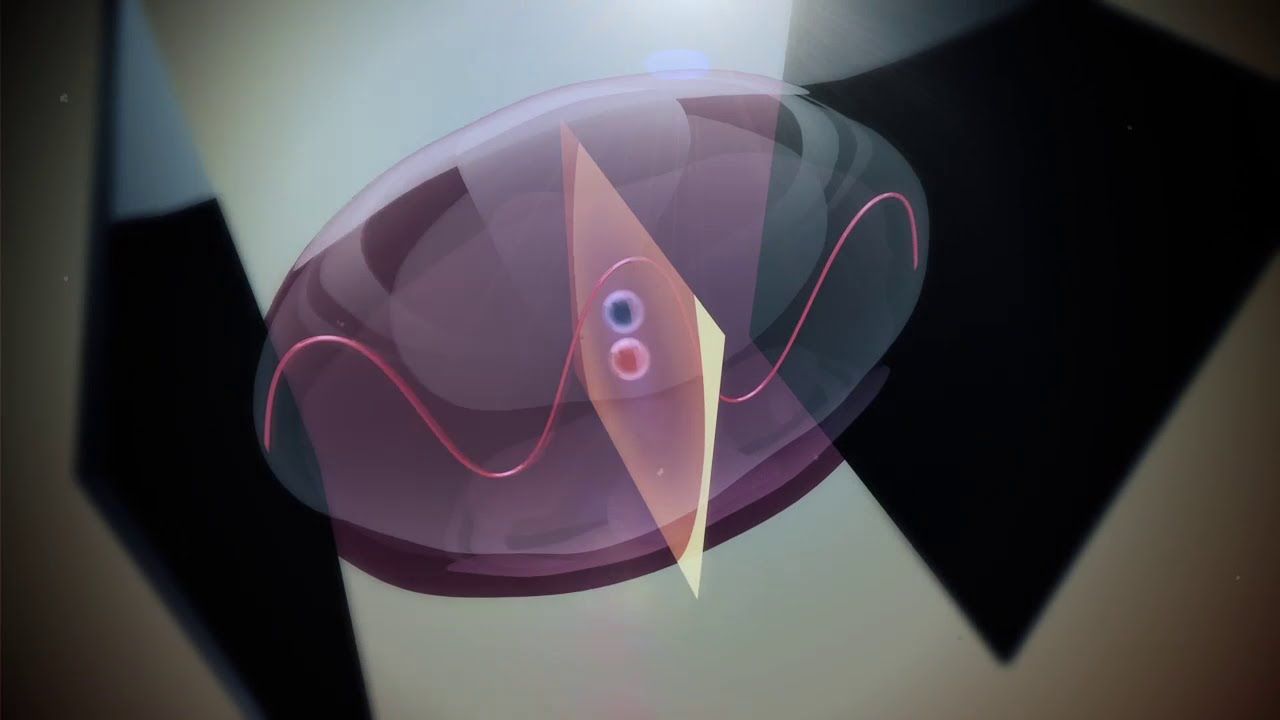
In Brief Researchers have found a way to bridge the gap between light and electricity—the two main components of current data transmission. Using the liquid light produced by polaritons, they were able to unite the two, a development that would lead to faster data transmission.
As we reach the smallest units known to physics, it’s becoming more apparent than ever: Moore’s Law can’t hold strong forever. But although it seems we are exhausting the extent to which we can miniaturize processors (as far as we know now), it seems Moore’s Law won’t be scrapped for good…at least not entirely.
Mar 9, 2017
Scientists May Have Solved the Biggest Mystery of the Big Bang
Posted by Andreas Matt in categories: cosmology, particle physics
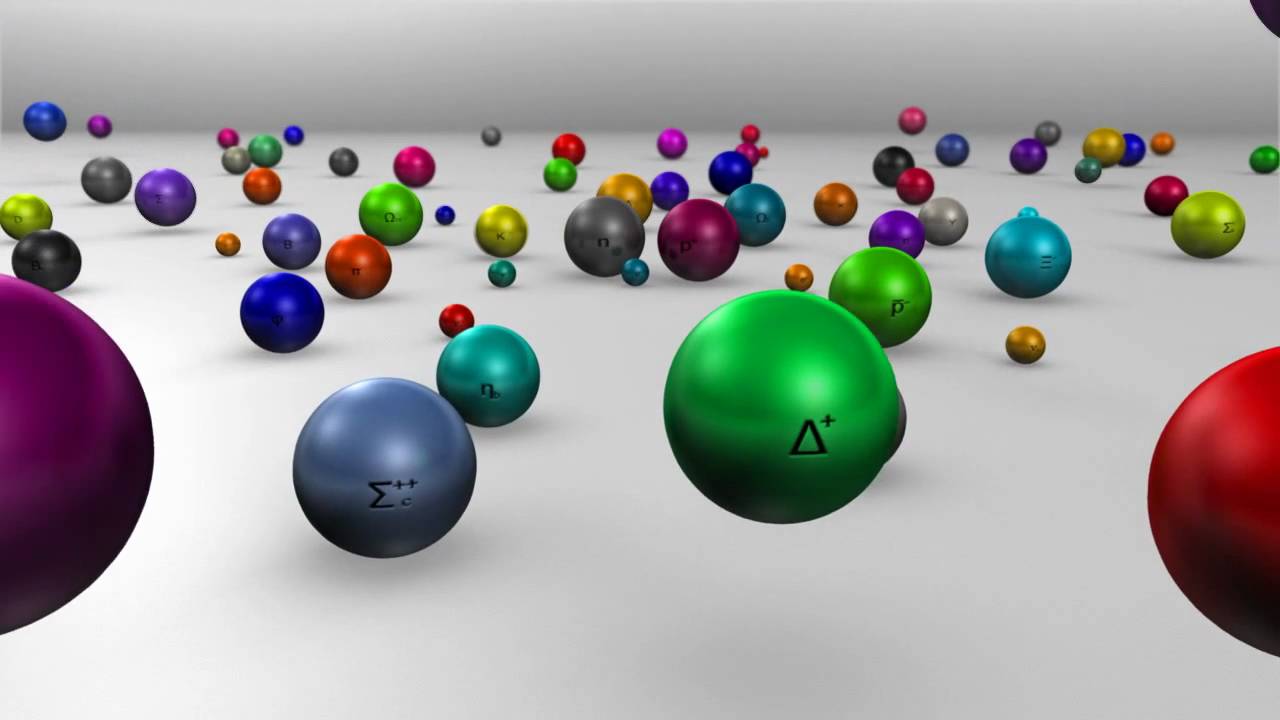
The European Council for Nuclear Research (CERN) works to help us better understand what comprises the fabric of our universe. At this French association, engineers and physicists use particle accelerators and detectors to gain insight into the fundamental properties of matter and the laws of nature. Now, CERN scientists may have found an answer to one of the most pressing mysteries in the Standard Model of Physics, and their research can be found in Nature Physics.
According to the Big Bang Theory, the universe began with the production of equal amounts of matter and antimatter. Since matter and antimatter cancel each other out, releasing light as they destroy each other, only a minuscule number of particles (mostly just radiation) should exist in the universe. But, clearly, we have more than just a few particles in our universe. So, what is the missing piece? Why is the amount of matter and the amount of antimatter so unbalanced?
Continue reading “Scientists May Have Solved the Biggest Mystery of the Big Bang” »
Mar 7, 2017
Quantum Microscope Spies on Chemical Reactions in Real Time
Posted by Bruno Henrique de Souza in categories: particle physics, quantum physics
Diamond-based imaging system uses magnetic resonance of electrons to detect charged atoms.
- By Sara Reardon, Nature magazine on March 7, 2017
Mar 6, 2017
NASA wants to create the coolest spot in the universe
Posted by Andreas Matt in categories: particle physics, space
This summer, an ice chest-sized box will fly to the International Space Station, where it will create the coolest spot in the universe.
Inside that box, lasers, a vacuum chamber and an electromagnetic “knife” will be used to cancel out the energy of gas particles, slowing them until they’re almost motionless. This suite of instruments is called the Cold Atom Laboratory (CAL), and was developed by NASA’s Jet Propulsion Laboratory in Pasadena, California. CAL is in the final stages of assembly at JPL, ahead of a ride to space this August on SpaceX CRS-12.
Its instruments are designed to freeze gas atoms to a mere billionth of a degree above absolute zero. That’s more than 100 million times colder than the depths of space.
Mar 5, 2017
New path suggested for nuclear fusion
Posted by Andreas Matt in categories: nuclear energy, particle physics, quantum physics
Controlled nuclear fusion has been a holy grail for physicists who seek an endless supply of clean energy. Scientists at Rice University, the University of Illinois at Urbana-Champaign and the University of Chile offered a glimpse into a possible new path toward that goal.
Their report on quantum-controlled fusion puts forth the notion that rather than heating atoms to temperatures found inside the sun or smashing them in a collider, it might be possible to nudge them close enough to fuse by using shaped laser pulses: ultrashort, tuned bursts of coherent light.
Authors Peter Wolynes of Rice, Martin Gruebele of Illinois and Illinois alumnus Eduardo Berrios of Chile simulated reactions in two dimensions that, if extrapolated to three, might just produce energy efficiently from deuterium and tritium or other elements.

